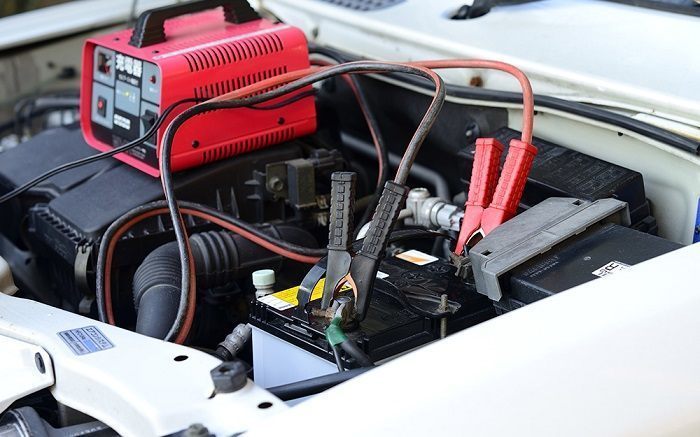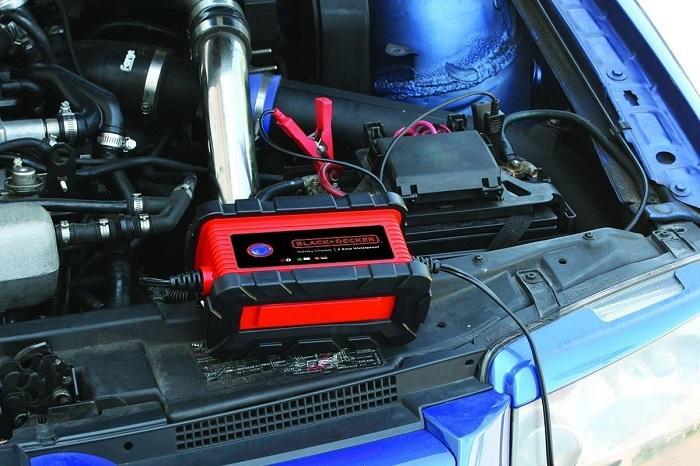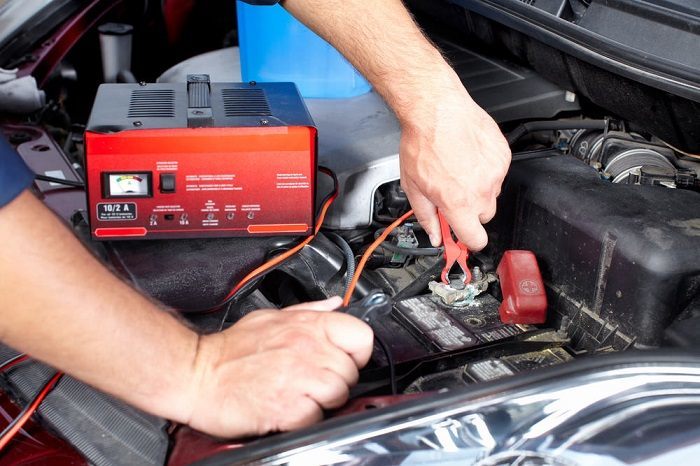by Joshua Thomas
We always expect our car's engine to roar to life every time we turn the ignition key or press the ignition button, hence when this does not happen, it can be quite frustrating.
In many instances, what causes the vehicle not to start is a dead battery. But, with a jump starter or some jumper cables, this should be a quick and easy problem to fix. However, the right fix if you have time is to hook up your battery to a charger and let it charge well and fully.
But, it is also vital to know how long you need to charge a car battery, and here we explain this and a few other important things you need to know about battery charging.
Contents

The time it takes to charge your battery fully or at least get it to a level that will allow the car to start will be highly dependent on the charger's amperage. And the higher it is the faster the battery will charge.
Here is a more comprehensive breakdown of battery charging times using the common charging options.
The 40-amp chargers are the fastest out there, and they will be perfect when you need to charge your battery quickly and efficiently. With a good model, you can have a dead battery charged enough to start your vehicle in just a few minutes, which makes it highly convenient.
The speed and efficiency of the 40-amp charger make them perfect for traveling. They can be lifesavers when you need to give your battery a quick boost and can also help give your vehicle a jump start using the jump cables.
However, you need to be extra careful when using the 40-amp charger as you can easily overcharge the battery if you connect it for longer periods than required. But, if you have a smart charger, this should not be a big concern as it reduces the amperage automatically as the battery gets more charge.
2-amp battery chargers are another common type, but they take a reasonably long time to charge the battery with some battery types and sizes taking up to 24 hours to attain a full charge.
This type of charger and charging system will be more ideal when you want to maintain the charge level on your battery and not to charge it fast. And if you plan to leave your battery charging for an extended period or have a battery that you rarely use, this will also be the ideal charger.
Charging a 48 amp battery using a 4-amp battery charger will take at least 12 hours to get a full charge. Hence, like the 2-amp chargers, these types will not be ideal when you want to charger a battery fast and efficiently.
However, the 4-amp battery charger will be perfect when you want to charge smaller batteries like the ones used on motorbikes. This charger is also ideal for maintaining the battery charge at a specific level and for charging batteries that are not used often.
Trickle chargers are one of the most popular options out there, and they will typically operate at 2 amps which means they will take a long time to charge your battery as a regular 48-amp battery will require at least 24 hours to attain a full charge.
These chargers are often used in garages and workshops to maintain battery charge and will be very useful for batteries that are often left idle for a long time. But, trickle battery chargers will also offer safer charging and minimizes the risk of overcharging or damaging the battery.

Different kinds of car batteries will take a different amount of time to charge as highlighted above, but there are still several other factors that will determine how long a car battery charges. And understanding them is vital for quick and optimal charging. These factors include the following.
The first factor that will affect the battery charge time is how dead the battery is, and it should be obvious that a completely dead battery will require longer charging time than one that still has a little charge.
It is important to note that just because a battery cannot start the vehicle, this does not always necessarily mean that it has been drained out completely. Hence the level of depletion determines the charging time.
Charging rate will be highly dependent on the method that you are using or the type of charger and hence different methods will take different amounts of time to fully charge a car battery.
A 25-amp charger will charge faster than a 12-amp one as it is designed to allow for faster flow of power back to the battery. Hence, something like a 2-amp trickle charger will take much longer to charge a car battery.
While still at the charging rate, it is worth mentioning that most modern battery chargers provide a more intelligent operation and will often adjust the charging rate as the battery fills up. This means that trying to calculate the charging time when using these chargers can be a little inaccurate.
Vehicles come in different sizes, which means it should also be obvious that they will use different battery sizes.
For a small car with a 40Ah battery, it will typically take around half the time to charge the battery when compared to larger models with the 80Ah batteries if using chargers with the same rate of charging.
There are still many other factors that might affect the charging time for a car battery and in many instances, you might not be able to control them.
One such factor is the condition of the battery because older batteries with worn-out components do not hold a charge very well and often take a long time to fully recharge. The condition of the terminals also has a significant effect on the charger time.
Although it might not be very significant, the gauge and length of the charging cables that you are using will also have a significant effect on the charging time. Shorter and heavier gauge charging cables tend to charge faster than the longer ones with a lighter gauge.

If you take good care of your vehicle, your battery will hardly ever require any charging for up to 5 years. But, if you have to recharge your battery, you need to make sure you do it optimally, and here are a few steps to help you with this.
Step 1. Pick a Good Charger
The first step when charging a battery should always be to choose a good charger if you do not already have one lying around in your garage.
And while there are different kinds of battery chargers out there, a trickle charger is often the best choice as it provides a slow and steady charging stream. With a trickle charger, the battery will be optimally charged to ensure it holds the charge longer.
Recommended Product: Battery Tender 021-0123
Step 2. Clean the Terminals
Before charging your battery, one of the most important things to do should always be to check and clean the terminals. Clean terminals will provide better contact between the charger and battery and hence ensuring fast and optimal charging.
You should clean the terminals using a manual sandpaper pad or a wet rag and then apply some baking soda. But, it is important to make sure that you do not touch the whitish substance on the terminals with your bare hands as this is dry sulfuric acid that can easily burn your hands.
Step 3. Remove Cell Caps
Many battery types will include a series of cell caps either at the top of the battery or just below the yellow strip that you will get in almost all batteries.
To ensure safe and optimal charging, you need to remove these cell caps before connecting the charger. Removing the cell caps ensures that the gases that build up in the battery during charging can be released.
Step 4. Attach Charging Cables
Many vehicle owners will not put much thought into attaching the charging cables as it looks like something simple and obvious. However, it is still possible to get things terribly wrong at this step, and so you need to be keen.
Here, the most important thing will be to ensure that you connect the wires to the right place with the red wire going to the positive terminal and the other wire to the negative terminal. And make sure the wires do not touch as they can spark and lead to accidents.
Step 5: Turn on Charger and Leave Battery to Charge
The last step is to connect the charger to a power source and turn it on to start charging. Leave the battery to charge overnight or at least for a few hours depending on the size and type.
The instructions on the car battery charger and our charging time guide above should give you some idea on the charging time required.
Finish by checking whether the battery is fully charged and then test it on your vehicle to determine if it is working okay.
A battery that will not start your vehicle is probably the most annoying part of owning a vehicle. However, it happens to almost all vehicle owners at some point, and so it is vital to understand how long a battery takes to charge and how to charge it optimally.
Battery charging time will typically depend on factors like the battery size and amperage, condition of the battery and also other factors like the condition of the battery charger you are using.
Overall, a trickle charger, which is one of the most common types out there will take the longest time to charge a car battery while the faster and efficient 40-amp chargers take the shortest time.
Sources
 |
 |
 |
 |

About Joshua Thomas
Joshua Thomas just simply loves cars and willing to work on them whenever there's chance... sometimes for free.
He started CarCareTotal back in 2017 from the advices of total strangers who witnessed his amazing skills in car repairs here and there.
His goal with this creation is to help car owners better learn how to maintain and repair their cars; as such, the site would cover alot of areas: troubleshooting, product recommendations, tips & tricks.
Joshua received Bachelor of Science in Mechanical Engineering at San Diego State University.